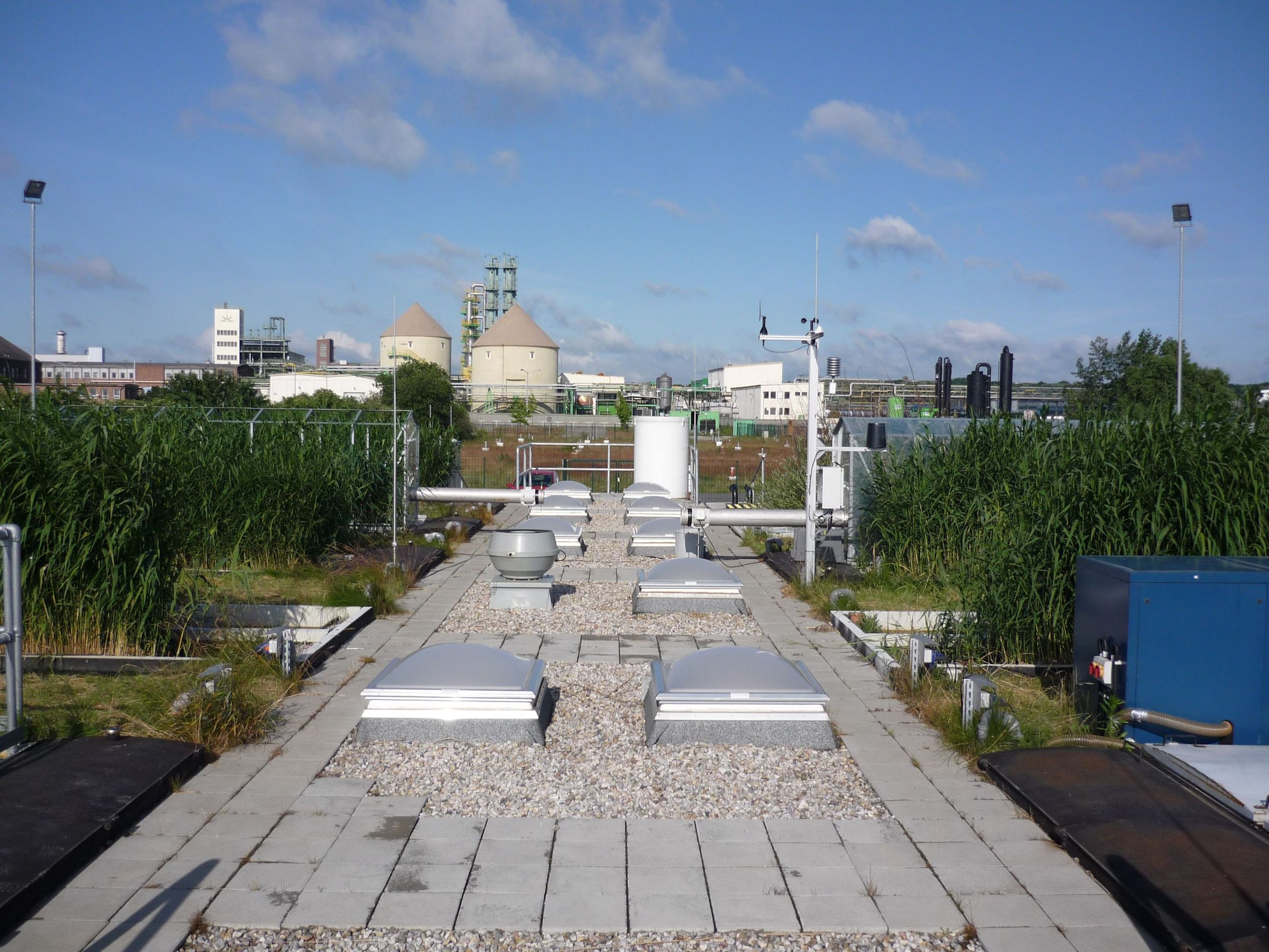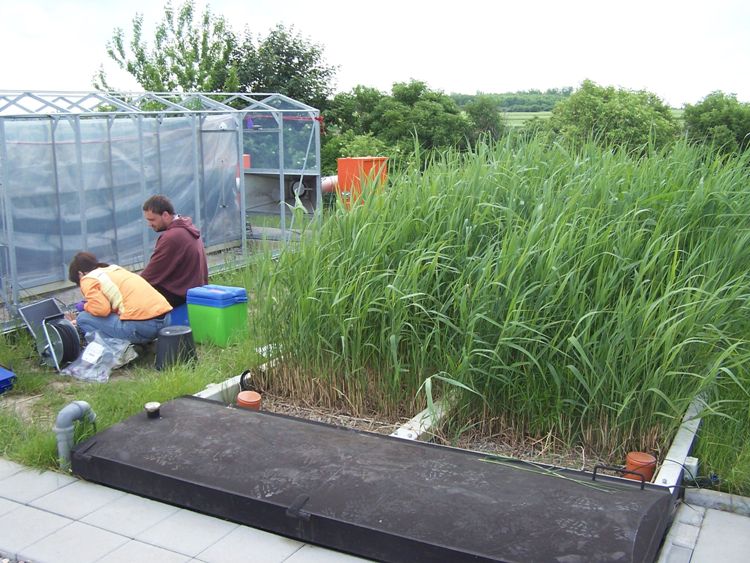SAFIRA II Project "Compartment Transfer - CoTra"
Near-nature groundwater remediation techniques for large-scale contaminated sites

Project Idea
The Compartment Transfer pilot plant located in Leuna is part of the SAFIRA II research project and has been in operation since 2007. The main goal of the project is the development of near-natural groundwater remediation techniques for large scale contaminated sites, so called megasites. The project is based on the transfer of contaminated groundwater from anaerobic into aerobic environments (near-surface environmental systems), which usually induces a significant increase of biological and chemical contaminant degradation. Aerobic environments like surface water, plant-root zones, unsaturated soil zones or the atmosphere are more reactive compartments. The technically controlled contaminant transfer from anaerobic into aerobic conditions is performed via constructed wetlands and aerobic trench systems in order to foster natural degradation processes of the site's main contaminants; BTEX (benzene, toluene, ethylbenzene, and xylenes), MTBE (Methyl tert-butyl ether), and ammonium.
CoTra Phase II
After three years of operation the first results of the CoTra pilot plant are now available proving the efficiency of the developed techniques for a large-scale application. Furthermore, in the scope of the first project phase (CoTra Phase I, 2007-2010) a multitude of investigations were performed regarding the transfer of the results gained to natural buffer capacities and degradation potentials of floodplains as well as a general understanding of processes and biogeochemical interactions taking place in wetlands. These outcomes will be validated within a second project phase (2010-2012) accompanied by continuative research. For that purpose the available infrastructure will be specifically used for the following two project focal points:

View of the Leuna site (source: UFZ)
The main objective of focal point A is the development and realisation of a full-scale eco-technology plant at the Leuna site based on the most efficient techniques developed in the first project phase. The technical plant will be realised in cooperation with an industrial company. The planned concept is supposed to work more efficient than the present conventional treatment plant on-site.
Projects:
- A1: Groundwater remediation via horizontal-flow constructed wetlands
- A2: BTEX and MTBE removal from groundwater at the Leuna site via vertical-flow filter technology
- A3: Investigations on contaminant degradation optimisation in structured trench systems
- A4: Emission measurements and development of monitoring concepts/investigations on VOC in marsh plants

Research at the CoTra pilot plant (source: UFZ)
The interface between aquifers and open surface water bodies are typically wetlands and flood planes with various sedimentary compartments which are characterized by changing water levels, hydrology, biogeochemical conditions and steep gradients. Groundwater is continuously recharged from surface waters and clean surface water may infiltrate into an aquifer which is contaminated. These processes are investigated within focal point B which is dealing with the ecology and efficiency of microbial contaminant degradation in wetlands and trench systems by manipulating initial process parameters. The main objective is an improved general system understanding of chemical and physical processes taking place as well as of the spatial and temporal adaption of microbial communities in wetlands and trench systems.
Projects:
- B1: Investigations on microbial nitrogen cycle in wetlands and trench systems
- B2: Microbial activities at surface-groundwater interfaces in wetland systems
- B3: Process oriented studies on microbial degradation of contaminated groundwater
- B4: Model-based process modelling
Besides that another important goal of the first project phase was the transferability of the results gained to other industrial sites contaminated with different substances. Thus, the investigations will be extended in the second project phase covering “Bitterfeld site” typical contaminants (chlorobenzene) as well as other model pollutants like PAH, heterocyclic compounds, and phenol.
Contact
Scientific Project Management
Dr. Hans-Hermann Richnow
Department of Isotope Biogeochemistry
Prof. Matthias Kästner
Department Environmental Biotechnology
